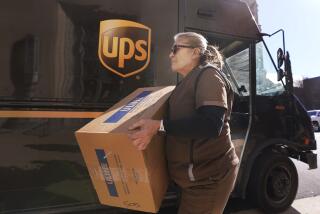Pilot Strike at United Airlines
- Share via
I am writing to thank you for publishing Henry Weinstein’s excellent article (May 15) about the present impasse that exists between United Airlines and its pilots. During this strike by the pilots of the largest and financially healthiest commercial carrier in the free world, it is appropriate to expand upon some of the ideas that were introduced in your coverage.
It is clear that the two-tier wage scale so aggressively sought by United management is a device intended to create a deep chasm in the midst of what ought to be a unified group of employees. I believe that this division is a “union-busting” technique that represents the principal purpose of the non-merging two-tier system. Consider briefly the destructive effect on air safety of a fundamentally divided cockpit crew, a circumstance that can do nothing but add more stress to an already stressful job.
Consider also the dollar value of an airline pilot. An average annual income of $80,000 to $90,000 does indeed sound generous, but many of these dedicated professionals earn in a single split second every last penny they are paid during their entire careers, and that is a small price for the lives of the 300 or so trusting souls riding in the back of the plane.
It has been suggested that the much more modest wage inherent in the two-tier proposal would fail to attract the same breed of pilot as do present salaries, and that one of the effects of such a profound change in the way management views professionals would be a sacrifice in standards. In other words, in order to meet the staffing demands of an expanding industry, management would have to relax its standards and hire significantly less qualified pilots, a frightful specter at best.
Management lacks credibility. I do not for one moment believe that an airline that produced an operating profit of more than half a billion dollars in 1984 (an annual profit greater than that of any other single air carrier in the entire history of commercial aviation, including boom times) needs to wring concessions and economies out of the most critical members of its staff--at a significant risk to the long-term safety of the flying public.
SUSAN KLENNER
Woodland Hills
More to Read
Inside the business of entertainment
The Wide Shot brings you news, analysis and insights on everything from streaming wars to production — and what it all means for the future.
You may occasionally receive promotional content from the Los Angeles Times.










